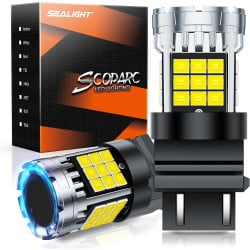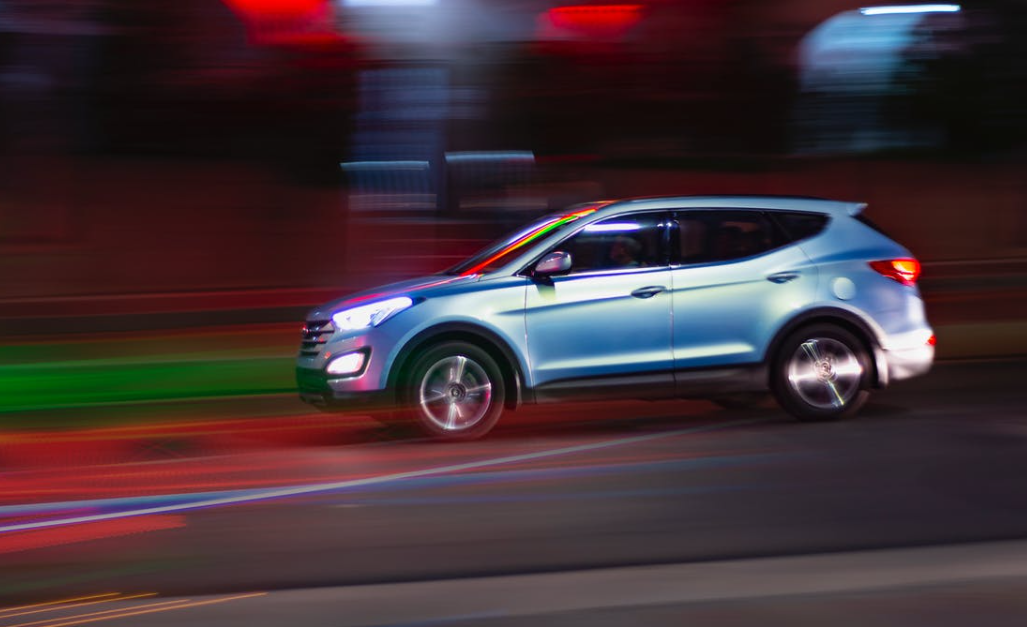3057 vs 3157: Differences & Pick the Right Bulb for Your Car
In automotive lighting, even small differences in bulb specifications can affect visibility, energy consumption, and overall safety. 3057 and 3157 are bulb sizes commonly used in brake lights, turn signals, and daytime running lights (DRLs), and are often listed as interchangeable.
This article examines their real differences, practical interchangeability, and LED upgrade options. Let’s dive in!

What Are 3057 and 3157 Bulbs?
The 3057 and 3157 bulbs belong to the T25 dual-filament family and use the same W2.5×16q wedge base.
This means they share identical physical dimensions and can generally fit into the same socket. Both are designed to support two illumination levels:
A low-intensity filament for tail or parking light operation.
A high-intensity filament for brake or turn signal use.
Because of this shared structure, both bulbs are widely used in the same lighting applications and are considered functionally compatible in most vehicles.
Shop NEW 3057 3157 bulbs here >>
3057 vs 3157 Technical Comparison
What are the real differences between 3057 and 3157 bulbs? Check the specs table below!
| Specification | 3057 Bulb | 3157 Bulb | Difference |
| Base Type | W2.5×16q (wedge) | W2.5×16q (wedge) | Identical |
| Filament Type | Dual (high/low) | Dual (high/low) | Same |
| Bright Filament Power | ≈ 26.9 W | ≈ 27 W | Nearly identical |
| Dim Filament Power | ≈ 6.7 W | ≈ 7–8 W | 3157 slightly higher |
| Brightness Output | Slightly lower | Slightly higher (on low filament) | 3157 marginally brighter |
| Common Applications | Brake, turn, reverse, DRL | Brake, turn, reverse, DRL | Same |
| Interchangeable | Yes | Yes | Fully compatible |
The main measurable difference lies in the power rating of the low-intensity filament. The 3157 draws slightly more current, resulting in marginally higher brightness when used as a parking or tail light.
For high-intensity operation (brake or turn signal), both bulbs produce nearly identical output.
This explains why users who have tested both typically observe minimal visible difference except in low-beam running light mode.
3057 vs 3157 Bulbs: Which One Should You Choose?
Choosing between the 3057 and 3157 bulbs often comes down to vehicle compatibility. Always verify your Original Equipment Manufacturer (OEM) number before purchasing to ensure the correct fit. You can find this information from your vehicle’s owner’s manual.
Most vehicles list the bulb type and part number for each lighting application (headlights, tail lights, turn signals) in the manual.
Should I Upgrade to LED Bulbs?
Yes. Over time, incandescent bulbs lose brightness and efficiency. Upgrading to LED bulbs offers several advantages:
Brighter illumination for tail, brake, and turn signals
Lower power consumption, reducing load on the vehicle’s electrical system
Longer lifespan, minimizing replacement frequency
Faster response time for brake lights, improving reaction time for drivers behind you
Because the 3057 and 3157 share the same base, most LED bulbs are compatible with both sizes. However, it is important to select LEDs designed for automotive use, preferably with CAN-bus compatibility to avoid flickering or error warnings.
Example 3057 3157 LED Bulbs You Can Buy:
Frequently Asked Questions About 3057 and 3157
Q: Are 3157 and 3057 the same bulb?
Ans: While they have similar designs and are largely interchangeable, the 3157 and 3057 bulbs have slight differences in their power draw and brightness levels.
Q: Will a 3057 bulb work for 3157?
Ans: Yes, in most cases, a 3057 bulb will work in place of a 3157 due to similar base types and physical dimensions.
Q: What is a 3057 bulb used for?
Ans: A 3057 bulb is versatile, finding uses in turn signal lights, brake lights, reverse lights, and daytime running lights.
Last Words
To get the best results with your car’s lights, use the bulb type recommended in your owner’s manual and stick with trusted brands for consistent performance. If you’re thinking about switching to LEDs, make sure they’re made for 3057 or 3157 sockets and support CAN-bus systems to avoid dashboard errors. Always change both bulbs at once for even lighting.
Read More:
- 9006 vs 9012 Bulbs: Key Differences & How to Pick the Right One
- 3057 vs 3157: Differences & Pick the Right Bulb for Your Car
- 168 vs 194 Bulbs: Key Differences & How to Choose the Right One
- H7 vs H11: Difference Explained & Pick the Right Bulb
- H11 vs H8 vs H9 vs H16 Bulbs: Differences & How to Choose the Right One
- 1156 vs. 1157 Bulbs Explained: Compatibility, Brightness & More







Leave a comment